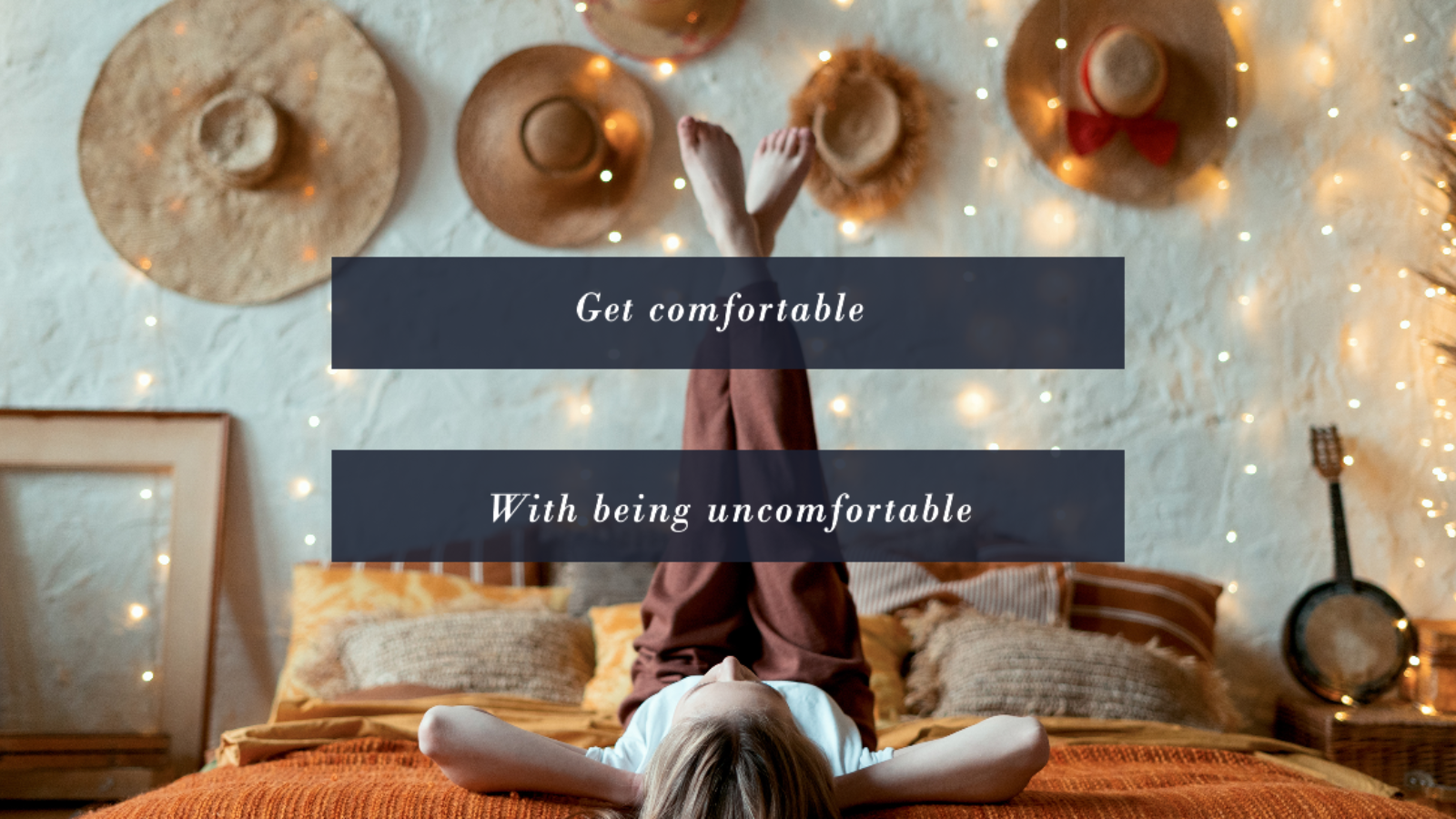Here are self-care strategies to transform discomfort into an advantage for emotional pain, mental blocks, and physical limits. Embrace change and rediscover self-care.
Table of Contents
We often shy away from situations that make us uneasy. However, stepping out of our comfort zones can be a powerful form of self-care. Embracing discomfort not only helps personal growth but also strengthens our resilience and adaptability. This short article explores simple, actionable strategies to help you get comfortable with being uncomfortable, to have a more fulfilling and self-aware life.

One effective strategy to begin embracing discomfort is starting with small challenges. This approach allows you to gradually build tolerance to uncomfortable situations without overwhelming yourself. For instance, if you’re hesitant about trying new foods, start with something mildly different from your usual diet. Similarly, if public speaking terrifies you, begin by speaking up in smaller, more familiar groups. These incremental steps help ease you into discomfort, making it a manageable and even rewarding experience.
Emotional
- Know your feels: Pinpoint what’s really bugging you.
- Bounce back faster: Don’t let setbacks define you.
Mental
- Break those rules: Challenge your “can’t”s.
- Think outside the box: See the world differently.
Spiritual
- Find your why: Discover what truly matters.
- Chill out: Keep your cool when things get crazy.
Physical
- Push your limits: Discover what you’re capable of.
- Listen to your body: Know your strengths and weaknesses.
7 Simple Strategies to Get Comfortable with Being Uncomfortable
1. Start with Small Challenges
- Why it works: Gradual exposure to discomfort helps build resilience without overwhelming you.
- Examples: Try a new dish, take a different route to work, or do something spontaneous.
2. Practice Mindfulness
- Why it works: Being present helps you manage anxiety and fear during uncomfortable situations.
- How to apply: Use deep breathing techniques, meditation apps, or mindful walking to stay grounded.
3. Set Incremental Goals
- Why it works: Breaking down challenges into smaller steps makes them more manageable.
- How to apply: If you want to lose weight, walk for 15 minutes daily or reduce sugary drinks or snacks by one per day.
4. Reframe Negative Thoughts
- Why it works: Changing your mindset can transform how you perceive discomfort.
- How to apply: Replace thoughts like “This is too hard” with “Let me try it first.”
5. Seek Support and Accountability
- Why it works: A support system provides encouragement and helps you stay committed.
- How to apply: Join a group or find a buddy who shares similar goals, whether it’s a fitness class or just a community you’re interested of.
6. Reward Yourself
- Why it works: Positive reinforcement makes it easier to face future challenges.
- How to apply: Treat yourself after completing a challenging task, like enjoying a favorite snack or having an at-home spa day.
7. Reflect and Learn
- Why it works: Reflecting on your experiences helps you understand what works and what doesn’t.
- How to apply: Keep a journal to record your feelings, challenges faced, and lessons learned after stepping out of your comfort zone.
Embracing discomfort as a form of self-care might seem counterintuitive, but it’s a pathway to profound personal growth and resilience. By starting with small challenges, practicing mindfulness, and reframing negative thoughts, you can gradually expand your comfort zone. Remember, the goal isn’t to seek discomfort for its own sake but to allow these experiences to have a deeper understanding of yourself and your capabilities. So, take that first step out of your comfort zone and discover the surprising benefits of welcoming the uncomfortable into your life.




Pingback: Reduce Bloat and Improve Digestion: Move This Way with 10 Exercises
Pingback: 5-Minute Morning Habits For a Blissful Day
Pingback: What Milk Bath Can Do for Your Skin
Pingback: Color Power: Feel Better With Blue, Green, and Red
Pingback: Color Your Glow With This 5-Minute Makeup Prep
Pingback: Eat Berries: Better Sleep, Natural Glow, And Feel Great (3 Reasons)
Pingback: Self-Care Solo Picnic: 5 Tips To Enjoy Solitude Outdoors
Pingback: Walk for Sleep: A Simple Habit for a Better Night's Rest
Pingback: Way To Wellness: How To Walk With Intention
Pingback: 5 Tips To Manage and Reduce Tinnitus
Pingback: 11 Unique Dopamine and Serotonin Tips: From Ordinary to Extraordinary